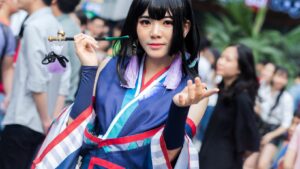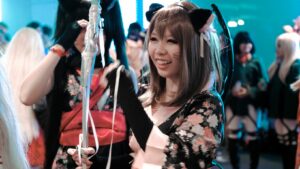Diving into the world of cosplay can be as thrilling as it is daunting. From the intricate costumes to the elaborate makeup, it’s a realm where creativity knows no bounds. But, if you’re new to the scene or looking to up your game, you might be wondering where to start.
Cosplay Tips
 Delving deeper into the dynamic world of cosplay, it’s essential to understand the definition and significance of this intriguing culture.
Delving deeper into the dynamic world of cosplay, it’s essential to understand the definition and significance of this intriguing culture.
Cosplay, a portmanteau of “costume play,” involves enthusiasts adopting the attire and character of their favorite pop-culture icons. Whether it’s a creative homage to a cherished character or an audacious display of fantasy, cosplay is more than just dressing up. It acts as a medium of self-expression, allowing individuals to channel creativity, craftsmanship, and love for a character.
Cosplay’s importance transcends the sphere of personal satisfaction. Engaging in cosplay offers communal benefits. Building costumes fosters creativity, honing skills in design and fabrication. Moreover, it thrives on a sense of community, cultivating friendships, and creating a shared environment of like-minded individuals who respect and appreciate the art.
The impact of cosplay on pop culture is substantial and multifaceted. Cosplay brings fictional characters to life, influencing and diversifying the cultural narrative. Through prolific presence in convention circuits, online fan communities, and social media, cosplay has revolutionized the fan experience, making it a participatory process rather than passive appreciation.
Essential Cosplay Tips for Beginners
 Diving into the world of cosplay offers an exciting, creative journey. For novices stepping into this realm, here are some indispensable cosplay tips.
Diving into the world of cosplay offers an exciting, creative journey. For novices stepping into this realm, here are some indispensable cosplay tips.
Selecting a character that resonates with a cosplayer, proves a crucial starting point. Cosplayers often opt for their favorite pop-culture characters to imitate. However, it’s an advantage if these characters have distinctive traits or costumes, such as Harry Potter with his round glasses and lightning bolt scar, or Katniss Everdeen with her braided hair and bow, allowing cosplayers to stand out distinctly.
Crafting Your Costume
 Crafting a cosplay costume demands a unique blend of skill, creativity, and meticulous planning. It’s an exciting endeavor that stretches beyond just clothing, to embodying one’s favorite character in full detail.
Crafting a cosplay costume demands a unique blend of skill, creativity, and meticulous planning. It’s an exciting endeavor that stretches beyond just clothing, to embodying one’s favorite character in full detail.
Savvy cosplayers know that sourcing the right materials and tools forms a significant part of their costume crafting process. They use a mixture of online and offline resources, both general and cosplay-specific, to acquire items such as fabric, thread, zippers, foam, and more. Additionally, tools like sewing machines, crafting knives, glue guns, and moulding tools are staples in the cosplayer’s toolkit.
For example, Jo-Ann Fabric and Craft stores are popular among cosplayers for the wide variety of cloth, yarn, and sewing accessories. Online marketplaces, such as eBay and Amazon are also frequently used. Meanwhile, for specialized items like foam for armour, sites like CosplaySupplies.com offer an array of materials specific to cosplay crafting.
When it comes to sewing and assembly, precision and patience become a cosplayer’s best friends. It isn’t uncommon to find cosplayers investing considerable time in learning sewing techniques, practicing their craft, and refining each piece of their costume.
Prior to starting any sewing, pattern drafting forms an essential step. Using patterns, cosplayers trace and cut out their materials, ensuring an accurate representation of the character outfit. For instance, Butterick’s and Simplicity offer cosplay-dedicated patterns, providing detailed instructions and visual aids, making it easier for beginners to venture into this whole new world.
Depicting a character accurately hinges upon effective use of makeup. Incorporating a range of techniques can significantly boost resemblance, adding depth and believability to the character. For instance, ‘contouring’ gives more structure to physical features, strategically placing highlights and shadows to mould the face shape. ‘Eye makeup techniques’ are another, where colors and shades set the tone for character portrayal, determining the emotions portrayed. Specifically, ‘Smokey eyes’ for a fierce character, and ‘defined crease’ for a more innocent one. ‘Special effects’ makeup, involves the use of prosthetics or silicone for special characters, enabling physical transformation beyond natural human features. Not only does such expertise reflect commitment to this artsy craft, but also enhances overall character credibility.

